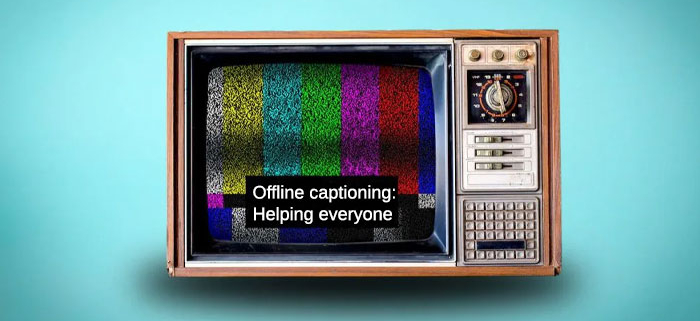Enhancing video accessibility with offline captioning
Video content dominates the online world, from social media platforms to educational institutions and business presentations. However, for individuals who are Deaf or hard-of-hearing, videos without captions can present significant challenges. This is where offline captioning becomes essential for accessibility and inclusivity.
Understanding offline captioning
Offline captioning involves adding captions to video content after it has been produced. These captions are synchronised with the video, providing a textual representation of spoken words, sound effects, and other audio cues as the video plays. There are two types of offline captioning:
Subtitles: These capture the spoken dialogue and voiceover narration, commonly found in foreign films to translate the original language.
Closed Captions: These go beyond dialogue and include additional audio information such as sound effects, music, and emotional cues.
The importance of offline captioning
Offline captioning plays a pivotal role in making video content accessible to everyone, regardless of their hearing ability. Here are some key reasons why offline captioning is important:
- Accessibility: Captioning ensures that individuals with hearing difficulties can fully engage with video content, fostering a more inclusive society.
- Legal Compliance: Many countries, including the UK and the United States, have legal requirements for captioning video content to ensure equal access. Failure to comply can result in penalties.
- Language Learning: Captions benefit those learning a new language by providing visual support for spoken dialogue.
- SEO Benefits: Closed captions provide searchable text that search engines can use to rank videos higher in search results.
The process of offline captioning
Offline captioning involves several steps to ensure captions are accurate and properly synchronised with the video:
- Transcription: The first step is creating a transcript of the spoken content, including sound effects and non-verbal audio cues.
- Time-Stamping: The transcript is aligned with the audio track, ensuring each line of text matches the specific point in the video where it should appear.
- Caption Formatting: The transcript is formatted into captions, usually placed at the bottom of the screen for easy visibility.
Tips for video content producers
To streamline the offline captioning process and ensure quality results, video content producers can take the following steps:
- Plan for captions from the beginning: Consider captioning needs early in the production process, such as clear audio and minimal background noise.
- Provide transcripts: Offering transcripts of video content can speed up the captioning process and provide additional benefits such as SEO.
- Use professional captioning services: Rely on experienced captioning professionals to ensure captions are accurate, timely and meet legal requirements.
Why choose our offline captioning services
At 121 Captions, we offer top-notch offline captioning services that prioritise quality and customer satisfaction. Our experienced team uses industry-leading techniques to deliver precise and comprehensive captions. We pride ourselves on:
- Quality Assurance: All our captioning work undergoes thorough checks for accuracy and clarity.
- Custom Solutions: We provide time-coding, translations, and mastering upon request.
- Money-Back Guarantee: We stand behind our work, offering a no-quibble money-back guarantee if you are not satisfied.
Offline captioning is a powerful tool for enhancing video accessibility and inclusivity. By providing captions, content creators can reach a broader audience and comply with legal requirements. At 121 Captions, we are committed to delivering exceptional offline captioning services that meet your needs. Contact us today to learn more about how we can help you make your video content accessible to all.




Leave a Reply
Want to join the discussion?Feel free to contribute!